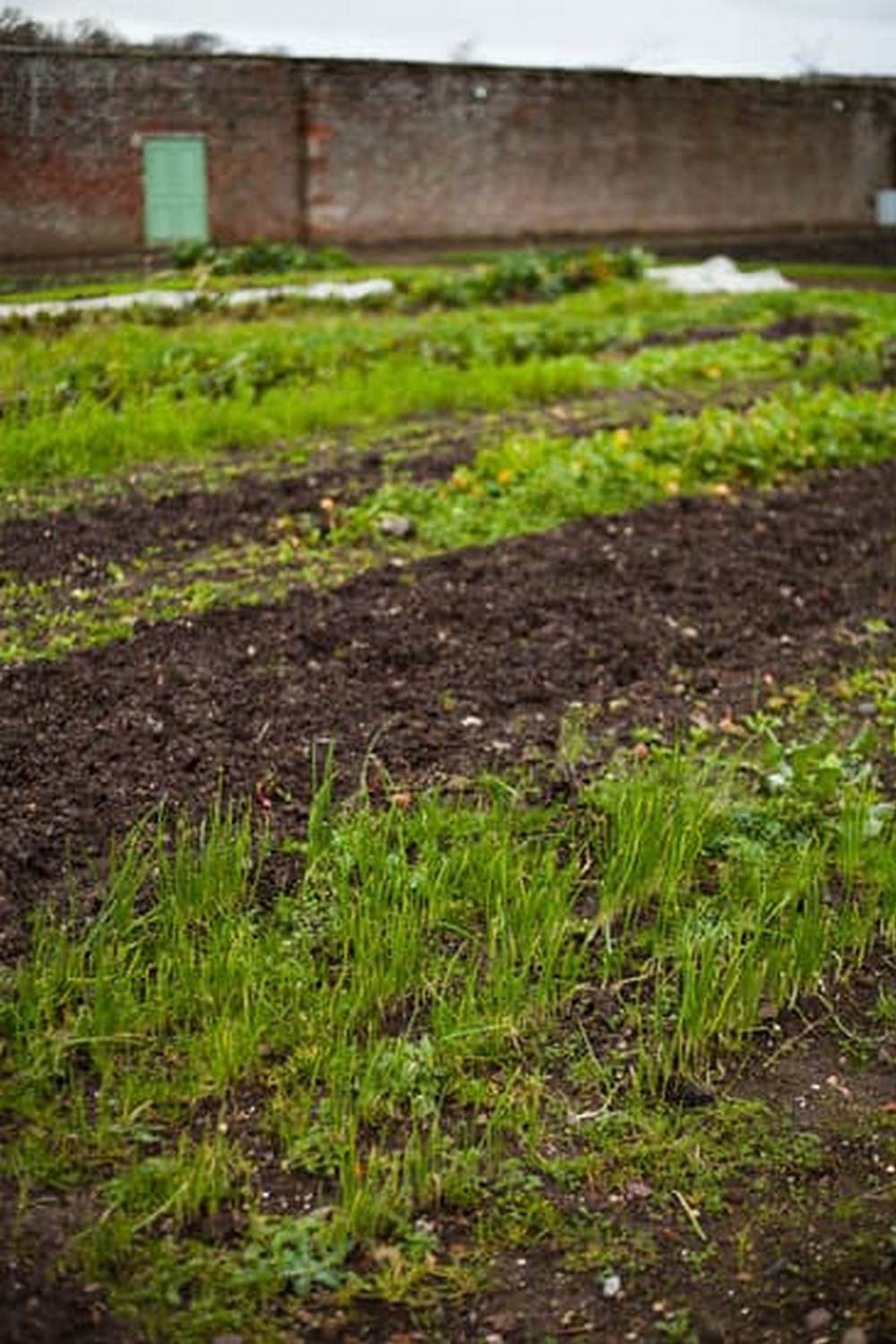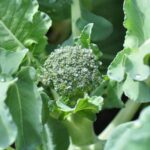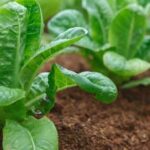Are you interested in growing your own vegetables, but don’t have the space for a traditional garden? Bottle gardening vegetables might be the perfect solution for you. This innovative and sustainable gardening method allows you to grow a variety of vegetables in limited space, making it ideal for urban dwellers or anyone with limited outdoor space.
Bottle gardening, also known as container gardening, offers several benefits, including greater control over soil quality and moisture levels, reduced weed growth, and the ability to extend the growing season. In this article, we will explore the world of bottle gardening vegetables, from choosing the right vegetables and bottles to planting, caring for, and harvesting your vegetable plants.
Whether you’re a beginner or a seasoned gardener looking to try something new, bottle gardening vegetables can be a rewarding and productive way to grow your own food.
In the following sections, we will guide you through the process of bottle gardening vegetables – from selecting the appropriate bottles and preparing them for planting to dealing with pests and diseases that may arise. We will also provide tips for success and creative ways to display your bottle-grown vegetables in your home or garden.
By the end of this article, you’ll be equipped with all the knowledge you need to start your own bottle garden and enjoy a bountiful harvest of fresh, home-grown vegetables.
Choosing the Right Vegetables for Bottle Gardening
When it comes to choosing the right vegetables for bottle gardening, it’s important to consider the space constraints and growing conditions of this unique gardening method. Luckily, many vegetables are well-suited for bottle gardening and can thrive in these small, contained environments. Here are some great options to consider:
- Tomatoes: These versatile vegetables can be grown in bottles with proper support and ample sunlight. Varieties like cherry tomatoes or patio tomatoes are especially well-suited for smaller spaces.
- Peppers: Whether it’s bell peppers, hot peppers, or sweet peppers, these veggies can flourish in bottles with sufficient drainage and warmth. They add a pop of color and flavor to your bottle garden.
- Lettuce: Leafy greens like lettuce are perfect for bottle gardening due to their compact size and shallow roots. You can enjoy fresh salads straight from your indoor or outdoor bottle garden.
In addition to these options, other vegetables that work well in bottle gardening include radishes, herbs like basil and cilantro, green onions, and even small varieties of cucumbers or squash. It’s important to choose vegetables that don’t require a lot of space for root growth and can adapt to the limited soil volume within a bottle.
When selecting vegetables for your bottle garden, consider factors such as the amount of sunlight they require, their water needs, and whether they can thrive in a confined environment. With the right choices, you’ll soon be enjoying a bountiful harvest from your bottle gardening efforts.
Selecting the Appropriate Bottles for Bottle Gardening
When it comes to bottle gardening vegetables, selecting the appropriate bottles is crucial for the success of your plants. The right type and size of bottles will provide the optimal conditions for your vegetable plants to thrive. Here are some important factors to consider when choosing bottles for your bottle gardening project:
Material
The material of the bottle plays a significant role in the health of your vegetable plants. Plastic bottles are commonly used for bottle gardening due to their lightweight nature and durability. However, glass bottles can also be used for a more aesthetic appeal. Make sure the bottles are clean and free from any harmful chemicals or residues that could potentially harm your plants.
Size
The size of the bottle will depend on the specific vegetable plant you intend to grow. Larger vegetables such as tomatoes or peppers will require bigger bottles with more room for root growth, while smaller herbs like basil or mint can thrive in smaller containers. Consider the mature size of the vegetable plant when choosing the appropriate bottle size.
Transparency
Transparent or semi-transparent bottles are ideal for bottle gardening vegetables as they allow sunlight to penetrate through, promoting photosynthesis and healthy growth. Avoid using opaque or colored bottles that may block out essential sunlight for your plants.
By carefully selecting the appropriate bottles for your bottle gardening vegetables, you can create an environment that supports healthy plant growth and ensures a bountiful harvest. With the right materials and considerations in mind, you’ll be on your way to enjoying fresh, homegrown vegetables from your own bottle garden.
Preparing the Bottles for Planting
Cleaning and Sterilizing
Before using bottles for gardening, it is essential to thoroughly clean and sterilize them to ensure the optimal growth of your vegetable plants. Remove any labels or stickers from the bottles and wash them with soap and water. Then, sterilize the bottles by either soaking them in a solution of bleach and water or boiling them for a few minutes.
Drainage Holes
Proper drainage is crucial for the health of your vegetable plants in bottle gardening. Use a sharp object such as a nail or drill to create small drainage holes at the bottom of the bottle. This will prevent waterlogging and root rot, allowing your plants to thrive.
Adding Potting Mix
Once the bottles are cleaned, sterilized, and have drainage holes, it’s time to add potting mix. Fill the bottles with a high-quality potting mix that is suitable for growing vegetables. Leave some space at the top of the bottle to accommodate watering without spilling soil.
By following these steps to prepare your bottles for planting vegetables, you can ensure that your bottle gardening project gets off to a great start. With clean, sterilized bottles that provide proper drainage and quality potting mix, your vegetable plants will have everything they need to grow healthy and strong.
Planting and Caring for Vegetable Plants in Bottles
When it comes to planting and caring for vegetable plants in bottles, there are a few key steps to keep in mind to ensure successful growth and a bountiful harvest. Follow these tips to make the most of your bottle gardening vegetables:
1. Planting the seeds: Start by preparing the soil mixture for your bottles. You can use a combination of potting soil, compost, and perlite to create a well-draining and nutrient-rich environment for your vegetable plants. Once the soil mixture is ready, carefully plant the seeds or seedlings of your chosen vegetables in the bottles, making sure to follow the recommended planting depth for each type of vegetable.
2. Watering and fertilizing: Proper watering is crucial for the success of your bottle gardening vegetables. Make sure to water your plants regularly, keeping the soil moist but not waterlogged. Additionally, you can also supplement with a balanced liquid fertilizer every 2-3 weeks to provide essential nutrients for healthy growth.
3. Providing adequate sunlight: Most vegetable plants require at least 6-8 hours of direct sunlight per day to thrive. Place your bottle garden in a sunny spot, such as a windowsill or balcony, where it can receive ample sunlight throughout the day.
By following these steps and providing attentive care to your bottle gardening vegetables, you can look forward to an abundant harvest of fresh and flavorful produce right from your own home. With proper planting, watering, and sunlight exposure, you’ll soon be enjoying a bountiful supply of homegrown vegetables in no time.
Tips for Successful Bottle Gardening Vegetables
When it comes to bottle gardening vegetables, there are several tips that can help ensure a successful and bountiful harvest. One of the most important factors to consider is the size of the bottle. While smaller bottles may be suitable for growing herbs or small vegetables, larger bottles will be necessary for larger plants such as tomatoes or peppers. Additionally, it’s crucial to choose a location with sufficient sunlight and proper drainage for your bottle garden.
Another tip for successful bottle gardening vegetables is to select the right type of soil. A well-draining potting mix that is rich in organic matter is ideal for most vegetable plants. It’s also important to water the plants regularly, but be careful not to overwater as this can lead to root rot. Monitoring the moisture levels and adjusting your watering schedule accordingly can make a big difference in the health and growth of your vegetable plants.
Furthermore, providing adequate support for climbing vegetable plants such as cucumbers or peas is essential. Building trellises or using stakes within the bottles can help these plants grow upwards and prevent them from becoming overcrowded. By following these tips and staying attentive to your bottle gardening vegetables, you’ll be on your way to enjoying a bountiful harvest of fresh, homegrown produce right from your own indoor or outdoor container garden.
Dealing With Pests and Diseases in Bottle Gardening
When it comes to bottle gardening vegetables, dealing with pests and diseases is a crucial aspect of ensuring the success of your garden. One of the key benefits of bottle gardening is that it can help protect your plants from certain pests and diseases, as the enclosed environment makes it more difficult for them to access the plants. However, this does not mean that your garden is immune to pest infestations or plant diseases.
One common issue that can affect bottle gardening vegetables is aphids, which are small insects that feed on plant sap and can quickly multiply if not dealt with promptly. To prevent aphid infestations, regularly inspect your vegetable plants for any signs of these pests and gently wash them off with a steady stream of water if you spot any.
Another potential problem in bottle gardening vegetables is fungal diseases such as powdery mildew, which can thrive in humid environments. To minimize the risk of fungal diseases, make sure to provide adequate air circulation around your bottles and avoid overwatering your plants.
In addition to these issues, it’s important to keep an eye out for other pests like caterpillars and snails, as well as bacterial infections that can affect the health of your vegetable plants. By staying vigilant and implementing proactive measures such as using organic pesticides or introducing natural predators to control pest populations, you can effectively manage these threats to your bottle gardening vegetables.
| Pests and Diseases | Preventive Measures |
|---|---|
| Aphids | Regular inspection and gentle washing with water |
| Fungal Diseases | Ensure adequate air circulation and avoid overwatering |
| Caterpillars, Snails, Bacterial Infections | Vigilance, use of organic pesticides or natural predators |
Harvesting and Enjoying the Fruits of Your Bottle Gardening Labor
There’s nothing quite as satisfying as reaping the rewards of your hard work in bottle gardening vegetables. After carefully tending to your plants and watching them grow, it’s time to harvest and enjoy the fruits of your labor. Whether you’ve grown juicy tomatoes, crisp lettuce, or vibrant bell peppers, harvesting your home-grown vegetables is a gratifying experience.
When it comes to harvesting vegetables from your bottle garden, timing is key. Make sure to harvest your vegetables when they are at their peak ripeness for the best flavor and texture. For example, tomatoes should be picked when they are fully colored and slightly soft to the touch, while lettuce should be harvested when the leaves are crisp and tender.
After successfully harvesting your vegetables, it’s time to savor the flavors of your labor. From making a fresh salad with hand-picked lettuce and tomatoes to adding homegrown bell peppers to a stir-fry dish, there are countless ways to enjoy the produce from your bottle gardening efforts.
| Vegetable | Harvesting Time |
|---|---|
| Tomatoes | When fully colored and slightly soft |
| Lettuce | When leaves are crisp and tender |
| Bell Peppers | When they reach full size and vibrant color |
Creative Ways to Display Bottle Gardening Vegetables in Your Home or Garden
In conclusion, bottle gardening vegetables can be a rewarding and sustainable way to grow your own produce at home. Not only does it allow you to make use of limited space, but it also promotes recycling and reduces waste. With the right selection of vegetables, proper care and maintenance, and creative display options, you can enjoy a bountiful harvest right from your own homemade planters.
When choosing the right vegetables for bottle gardening, consider the size of the bottles and the amount of sunlight they will receive. Herbs like basil and mint, as well as compact varieties of tomatoes and peppers, are great choices for bottle gardening. Additionally, leafy greens like lettuce and spinach can thrive in these small containers.
Once you’ve successfully grown your vegetables in bottles, get creative with how you display them in your home or garden. Consider hanging them on a wall or placing them on shelves to create an eye-catching vertical garden.
By showcasing your bottle gardening vegetables in unique ways, you not only add a decorative touch to your living space but also inspire others to try their hand at sustainable gardening practices. Ultimately, bottle gardening vegetables offers an accessible and environmentally friendly way to bring fresh produce into your life.
Frequently Asked Questions
What Are the Best Vegetables for Container Gardening?
The best vegetables for container gardening are those that don’t require a lot of space and have shallow root systems. This makes them suitable for growing in containers. Some examples include tomatoes, peppers, lettuce, radishes, and herbs.
Which Plants Grow Best in Plastic Bottles?
Many plants can grow well in plastic bottles, as long as the bottle is large enough to accommodate their root systems and has proper drainage. Herbs like basil and mint, small flowers like pansies or petunias, and even some small vegetables like cherry tomatoes or peppers can thrive in plastic bottles with the right care.
How Do You Plant Vegetables in a Water Bottle?
Planting vegetables in a water bottle involves cutting the bottle in half, drilling drainage holes at the bottom, filling it with potting soil, and then planting seeds or seedlings. Ensure proper watering and sunlight for the vegetables to grow effectively in the water bottle.

If you’re looking to get into vegetable gardening, or are just looking for some tips on how to make your current garden better, then you’ve come to the right place! My name is Ethel and I have been gardening for years. In this blog, I’m going to share with you some of my best tips on how to create a successful vegetable garden.





